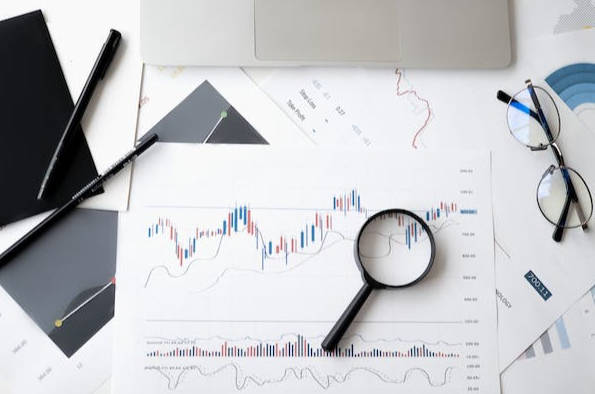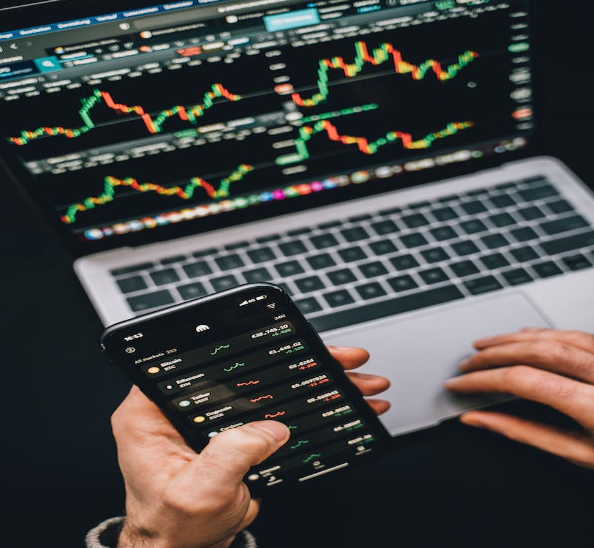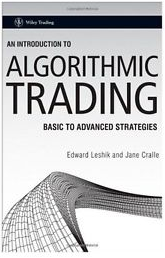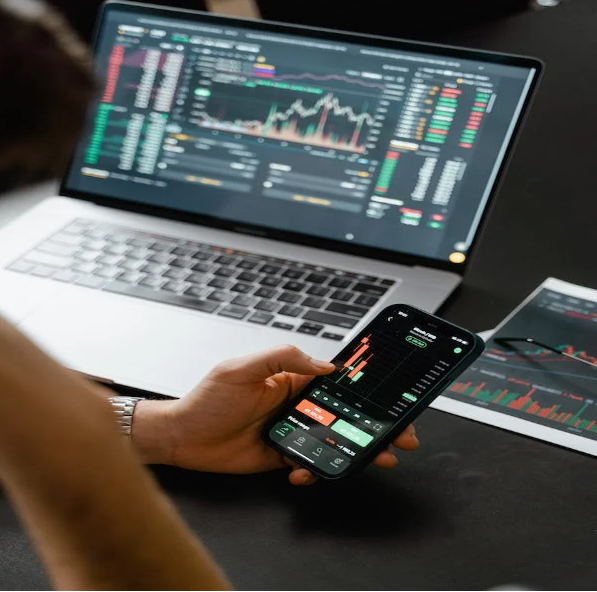Importance of Backtesting Algorithmic Trading Strategies
How traders engage in the financial markets has been transformed by backtesting algorithmic trading. The ability to perform trades quickly, precisely, and consistently is a feature of sophisticated algorithms and computer programs traders use. However, due to the intricacy of backtesting algorithmic trading strategies, it is essential to test their effectiveness before applying them to actual trading situations. Backtesting fills this need by offering a potent instrument for analyzing and improving trading strategies. This article will discuss the significance of backtesting algorithmic trading strategies.
What Is Backtesting?
A trading strategy’s success is evaluated using historical data during backtesting. Trading professionals use backtesting to assess their system’s effectiveness, identify any potential flaws, and fine-tune their set of principles and rules. Through backtesting, traders can find out how a plan has performed in the past and make adjustments to enhance it. Backtesting, a vital tool in algorithmic trading, assists traders in determining how to implement their strategies in real-world marketplaces.
Backtesting Bias
Backtesting bias is a common problem in backtesting algorithmic trading, which occurs when a trading strategy is tested using historical data that is not representative of current market conditions. This can happen when traders overfit their system to historical data, creating rules and instructions that are too specific to past market conditions and fail to perform well in real-world situations. Another type of backtesting bias is survivorship bias, which occurs when only successful strategies are tested, leading to overestimating their effectiveness. To avoid backtesting bias, traders should use out-of-sample data to test their system, ensuring they can perform well in diverse market conditions. Additionally, traders should be aware of the limitations of backtesting and continually monitor and refine their strategies based on real-world performance.
Look-Ahead Bias
Look-ahead bias is an error that occurs when traders test their strategies using future information that was not available at the time. This can lead to inaccurate results and overestimating the strategy’s effectiveness in real-world situations. Look-ahead bias can happen when traders accidentally include future information in their backtesting data or adjust their approach based on future information without realizing it. To avoid look-ahead bias, traders should ensure that their backtesting algorithmic trading data only includes information available during testing and avoid adjusting their strategies based on future information.
Why Is Backtesting Important?
Backtesting is essential for dealers because it enables them to assess the efficacy of their trading strategy before putting it into practice. It aids them in identifying areas for improvement, gaining faith in the method’s efficiency, and avoiding costly blunders. Traders can determine whether the strategy is likely profitable by testing it on historical data to see how it would have done in the past. And backtesting is important for traders to create and hone efficient trading strategies.
What Is The Process For Algorithmic Trading To Work?
In backtesting algorithmic trading, trades are automatically executed by computer programs under a series of predefined rules and instructions. The process starts with traders developing a trading concept that can be transformed into a program’s rules and instructions using programming languages like Python or C++. The program is tested using historical data after the regulations and education have been written to determine its efficacy and improve the rules and instructions. When prepared, the program is deployed to carry out trades in real time under preset regulations and directives. Traders are responsible for monitoring the program’s success and revising the guidelines as necessary.
As traders must handle a variety of risks, including market risk, execution risk, and technological risk, risk management is also a crucial component of algorithmic trading. Algorithmic trading generally automates the trading process and can assist traders in seizing market chances swiftly and precisely while reducing the risks connected to human decision-making.
Benefits Of Algorithmic Trading Strategies
There are several benefits to using backtesting algorithmic trading strategies. Here are some of the key advantages:
- Accelerated and more precise transaction execution
- Decreased human mistakes and emotional judgment
- Ability to analyze large amounts of data quickly
- Ability to backtest and refine strategies using historical data
- Improved trading performance
- Ability to take advantage of market opportunities
- Efficiently react to market changes.
Quant Trading VS Traditional Trading
The difference between Quant Trading VS Traditional Trading
Quantitative Trading
Quantitative trading, also known as algorithmic trading, is a trading strategy that uses computer programs and mathematical models to analyze market data and execute trades. The goal is to identify patterns and trends in the data to make profitable trades with minimal human intervention. This approach typically involves high-frequency trading, which requires quick decision-making and execution.
Process And Methodology Of Quantitative Trading
Quantitative trading entails gathering a significant quantity of market data, creating and testing mathematical models, and using computer algorithms to carry out trades based on those models. This necessitates knowledge of programming, money, and data analysis. Traders use statistical methods and machine learning tools to spot patterns and trends in the data. They also employ risk management techniques to limit the possible adverse outcomes of their trades. The ultimate objective is to minimize danger while consistently producing profits.
Advantages Of Quantitative Trading
Here are some benefits of quantitative trading
- With this trading style, you can estimate your odds of making a profitable trade.
- You can influence trading judgments through efficient research and monitoring on a particular stoke.
- To make more profitable trading choices, computer algorithms are used.
- Removing the emotions of fear and greed is the best method to encourage logical decisions.
Examples Of Popular Quantitative Trading Strategies
Several popular quantitative trading strategies include statistical arbitrage, trend following, mean reversion, and high-frequency trading. Statistical arbitrage involves identifying and exploiting pricing anomalies in financial markets. Trend following consists in buying assets that are trending up and selling assets that are trending down. Mean reversion involves buying investments that are undervalued and selling assets that are overvalued. High-frequency trading involves using algorithms to trade rapidly in and out of positions to take advantage of small price movements.
Traditional Trading
Based on fundamental analysis and market trends, traditional trading refers to buying and selling financial assets such as stocks, bonds, or currencies. It may involve manual intervention, be influenced by emotions and biases, and incur higher transaction costs than quantitative trading.
Process And Methodology Of Traditional Trading
Based on fundamental analysis and market trends, traditional trading typically involves buying and selling financial assets such as stocks, bonds, or currencies. Traders may use technical analysis tools such as charts and graphs to identify patterns and trends, economic indicators, and news events to make informed decisions. Traditional trading may entail manual involvement and be subject to biases and feelings. Traders can also use stop-loss orders and other risk management strategies to reduce possible losses. Comparing traditional and quantitative trading, the former may have more significant transaction costs.
Advantages Of Traditional Trading
Here are some advantages of traditional trading
- Traditional trading allows for a high degree of flexibility regarding investment options and strategies.
- Traditional trading allows for a human element, leading to better decision-making based on experience, intuition, and market insights.
- Traditional trading may be more suitable for long-term investments, focusing on fundamentals and market trends rather than short-term fluctuations.
4 Traditional trading typically has lower entry barriers than quantitative trading, which may require specialized skills and knowledge.
Pros And Cons Of Quantitative Trading
Here are some pros and cons of Quantitative trading:
Pros
- Objective decision-making
- Efficient use of time
- Better risk management
- Ability to process large amounts of data
- Consistency and scalability
Cons
- Complexity
- Reliance on technology
- Data quality
- Limited flexibility
- Market inefficiencies
Pros And Cons Of Traditional Trading
Here are some pros and cons of traditional trading:
Pros
Flexibility
Traditional trading allows for a high degree of flexibility regarding investment options and strategies.
Human Element
Traditional trading allows for a human element, which can lead to better decision-making based on experience, intuition, and market insights
Long-Term Investment
Traditional trading may be more suitable for long-term investments, focusing on fundamentals and market trends rather than short-term fluctuations.
Low Entry Barriers
Traditional trading typically has lower entry barriers than quantitative trading, which may require specialized skills and knowledge.
Diversification
Traditional trading allows diversification across different asset classes, industries, and geographies, reducing overall portfolio risk.
Cons
- Emotional Biases
- Manual Intervention
- Market Volatility
- Higher Transaction Costs
- Limited Scalability
Future Developments In Backtesting
Backtesting algorithmic trading methodologies are likely to continue to advance as technology progresses. Using machine learning and artificial intelligence algorithms could enhance trading strategies and success. Additionally, advances in data processing and analysis might result in backtesting techniques that are more precise and effective.
Conclusion
A key element of algorithmic trading is backtesting, which enables traders to evaluate the past performance of their trading strategies and increase their efficacy. Trading professionals can improve their odds of success and lower their risk of loss by testing and fine-tuning their strategies using historical data. Backtesting algorithmic trading also assures traders to make trades because they know their methods have been tried and thrived in the past. In the end, backtesting is a crucial tool for traders who want to increase their profits and succeed in the long run in the markets.
How Asset Revesting Dentist was rooted in preventive movement mixed with modest gains and was pleasantly surprised to see their money grow.





